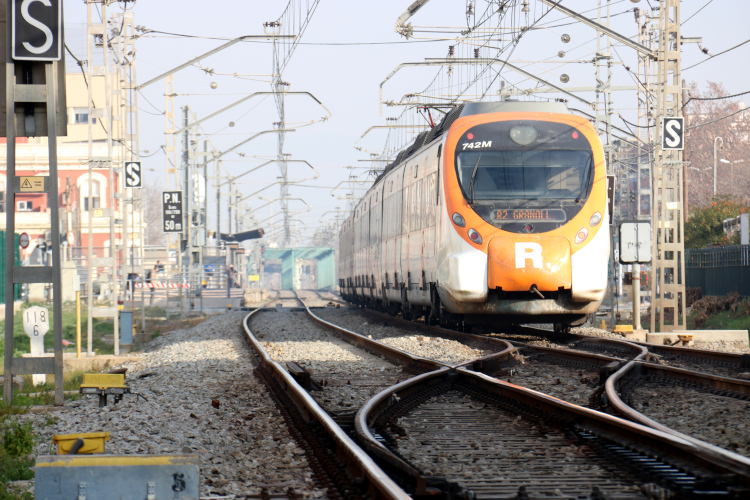Renfe short- and medium- distance trains to remain free for all of 2023
Spanish government subsidizes rail as measure to combat inflation

The Spanish government has announced plans to keep Renfe short- and medium-distance train tickets fully subsidized for all of 2023, extending the measure already in place from September to December of this year.
The measure, aimed at tackling inflation while also enticing more people to use public transport over private vehicles, was first announced during the summer and was initially only going to be in operation between September and the end of December.
In a press conference on Tuesday following the ministers' meeting that approved the budget plan for next year, Spanish finance minister María Jesús Montero explained that the transport budget will be increased by 41.2% up to €700 million. Most of this will go to Renfe to cover the subsidization of the tickets.
Montero wants to turn this policy into a more permanent idea and said that the executive wants to "see concrete results for the ecological transition," which she described as a "priority policy."
"In 2023, the Spanish government will fully subsidize tickets for short- and medium- distance trains managed by the executive. We want to see the benefits of the use of public transport for the ecological transition," the Spanish finance minister said during a press conference after the cabinet meeting.
The measure will only become official if the Spanish government's budget for 2023 is approved.
The move is part of the Spanish government's package of measures to counter the cost-of-living crisis and, more specifically, encourage the use of public transport in the face of high fuel prices. Tickets can be obtained on the Renfe app and website as well as at ticket counters and machines in stations.
How does it work?
It will be free of cost but users will have to pay a €10 deposit when buying it for the first time. Tickets went on sale on August 24 at Renfe ticket desks and machines. Travelers can also apply for the discount online.
In the initial plan, announced to be in effect for the last four months of 2022, Rodalies train users had to use the ticket at least 16 times between September and December.
If they comply with this measure, they will get a refund back at the end of the year.
Train journeys across Catalonia you can enjoy with free tickets
Catalans can travel across the territory using up to 15 different routes operated by Renfe. All of them will be free allowing people to visit Barcelona, several beaches, mountainous areas, go to the airport, or even travel to some of the other cities in Catalonia or in the neighboring regions of Aragon and Valencia, or even in France.
Rodalies has nine different train lines that can bring users to places such as the southern beaches of Castelldefels, Garraf, Sitges, Vilanova i la Geltrú, and even Calafell, all of them via the R2S line. It does not matter how long the journey takes, as all trips will be free of charge.
To the north, beaches accessible by train include but are not limited to Sant Adrià de Besos, Badalona, Masnou, Premià de Mar, Arenys de Mar, Canet de Mar, and Blanes. Travelers will have to take the R1 train line in this case, the oldest one built in Catalonia that is currently in danger due to climate change.
But trains were not only built to go to the beach, but also to stop in some of the biggest cities around the territory. Aside from the Barcelona El Prat Airport, the R2N line also stops in El Prat de Llobregat, another city south of the Catalan capital.
While the R2S has stations in Castelldefels, Gavà, and Sant Vicenç de Calders, among other sites.
Other big cities reachable by train include Ripoll and Puigcerdà (R3) in the northern mountains; as well as Vic (R3), Granollers (R2, R2S, and R8), and Terrassa and Manresa (R4), in inland Catalonia.
Students going to the Autonomous University of Barcelona (UAB) by Rodalies R7 will also benefit from the free ride.
Regional train lines
The other six Renfe-operated train lines in Catalonia are named ‘Regionals’ and are medium-distance covering several important destinations in the territory, from the northern town of Portbou on the coast right before the French border, to the southern tip of the territory, Ulldecona-Alcanar-La Sénia.
These lines are all those named ‘R’ and followed by a double-digit, as opposed to the Rodalies ones that only have one number.
With these train lines, travelers will even be able to cross the French border and visit Cerbère for free with the R11 line.
Before reaching the border, however, those going by train can stop in some Costa Brava areas such as Figueres, Llançà, or Colera.
Other interesting spots include the largest amusement park in Catalonia, Port Aventura (R17), and other major cities such as Tarragona (R14, R15, R16, and R17), Reus (R14 and R15), Girona (R11), and Lleida (R12, R13, and R14).
Regional lines also have a Regional Express option, reducing the number of stations the train stops at, therefore offering shorter journeys.
Barcelona could extend its discounted tickets
Hours after the Spanish government's announcement, the Barcelona mayor, Ada Colau, said she will request the city's public transport administration (ATM) to keep the current discounted prices during 2023.
The news from the central cabinet is "great" and "in the context of a financial and climate crisis, reducing public transport ticket prices will benefit families and the planet," she wrote in a statement shared on social media.
Public transport discounts in Barcelona range from 30% to 50% depending on the ticket acquired.